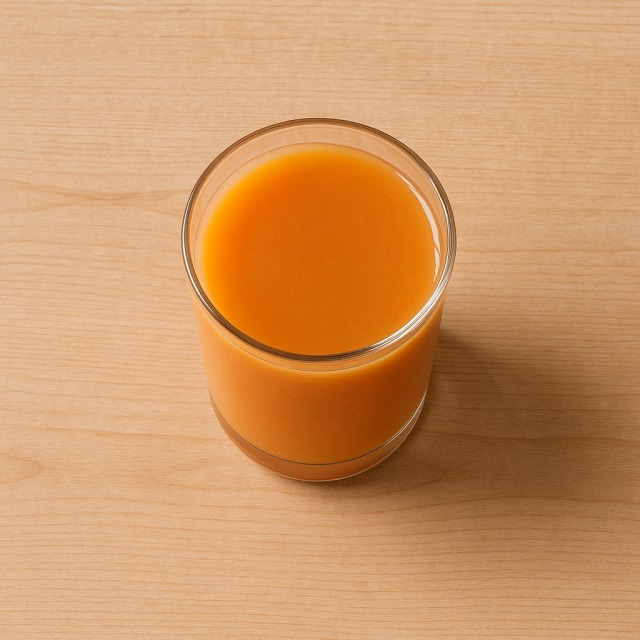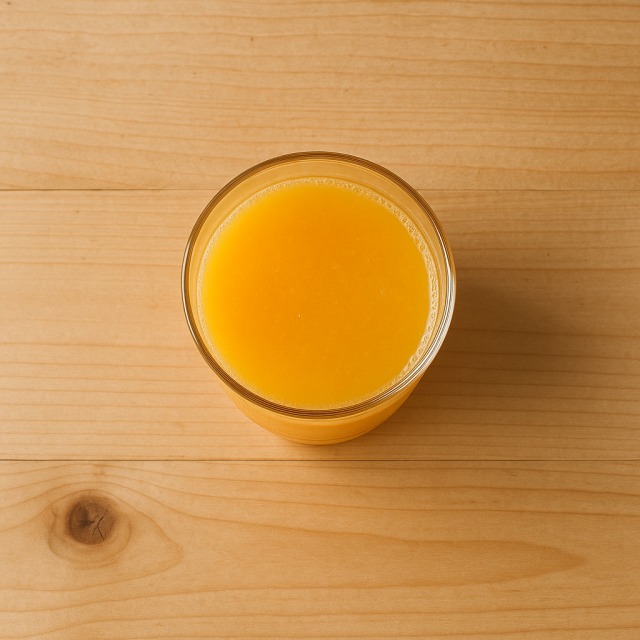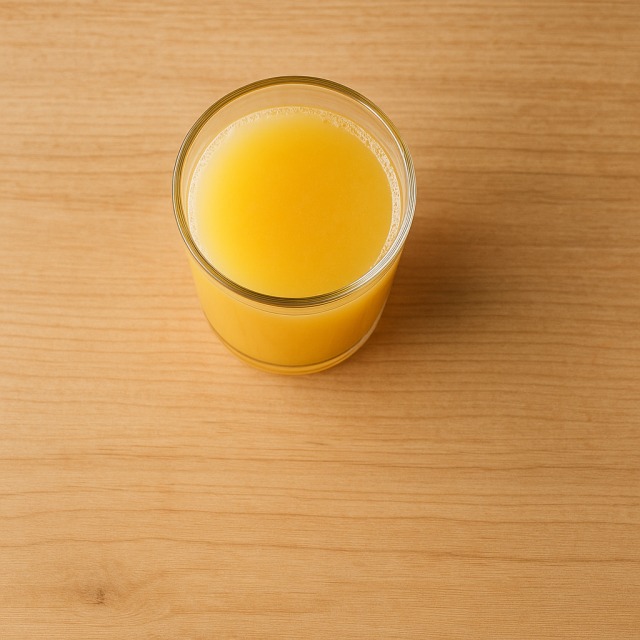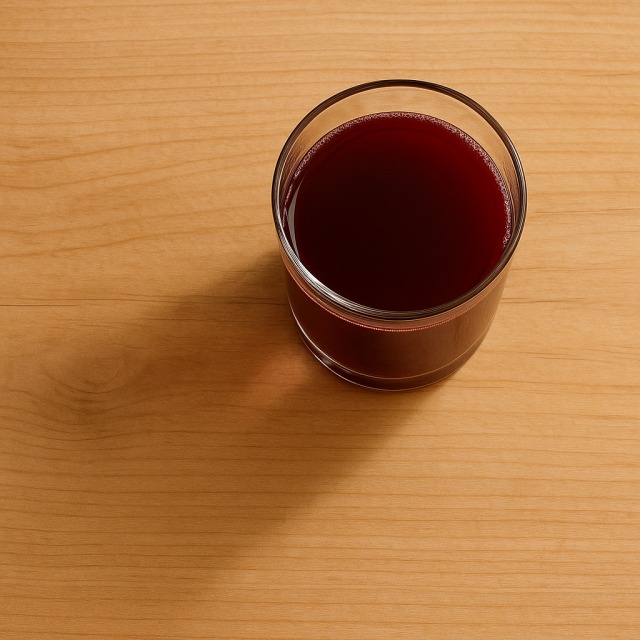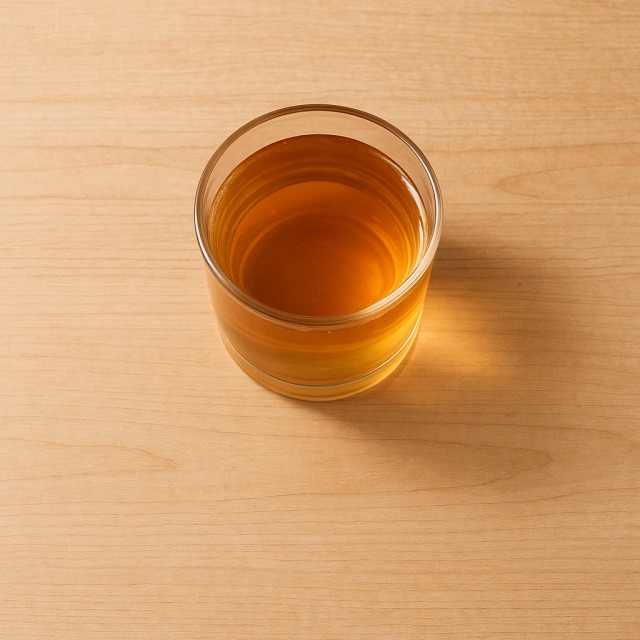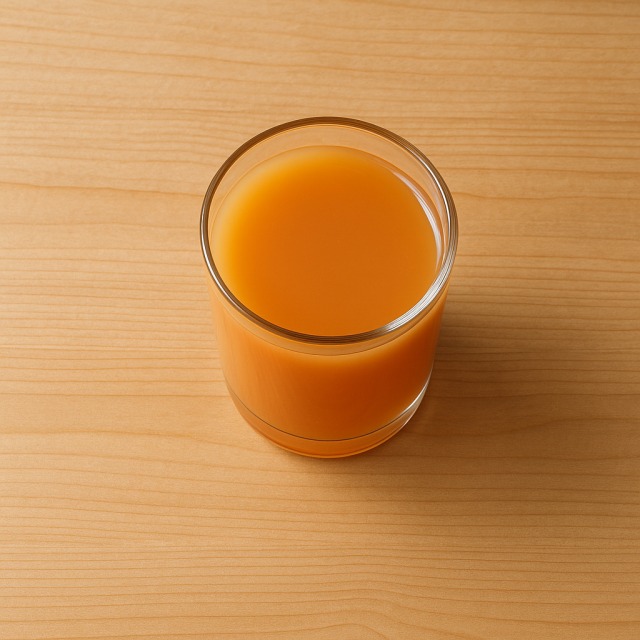Calorie Chart / Beverages / Juice - Tomato
How Many Calories Are in Tomato juice?
Calculation of the nutritional value & Recommended Dietary Intake of tomato juice
For ml and a calorie requirement of kcal
| Calories 50 kcal | Proteins 2.5 g | Lipids 0.5 g | Carbohydrates 8 g |
| 3% | 3% | 1% | 3% |
Health benefits of tomato juice
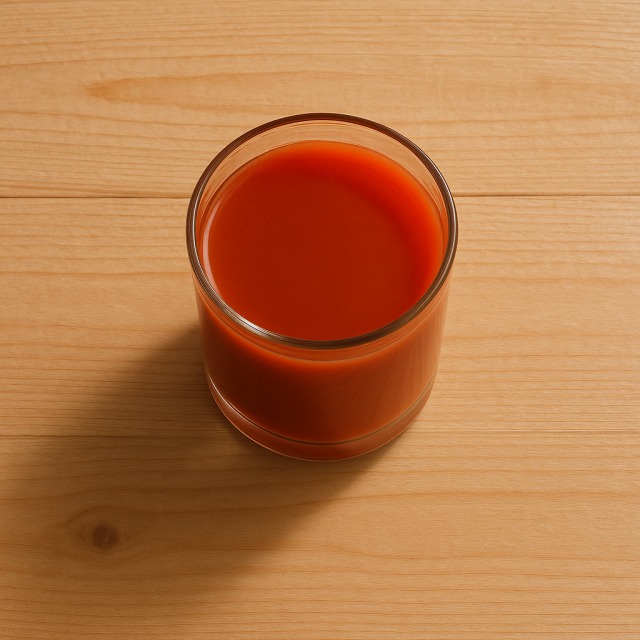
Tomato juice - 100ml
Calories 20 kcal
Proteins 1 g
Lipids 0.2 g
Carbohydrates 3.2 g
With only 20 kcal per 100 g, tomato juice is classified as a low-calorie food and allows you to quench your thirst without adding many calories to the day's tally. This slight calorie contribution is particularly useful for people who watch their calorie intake for weight loss or for athletes who need rapid hydration with minimal energy.
Beyond its modest calorie load, tomato juice supplies appreciable amounts of vitamin C, provitamin A (beta-carotene), vitamin K, and vitamin B6. It is also a good source of potassium and magnesium, two minerals that help regulate blood pressure and muscular contraction. Its deep red color comes from lycopene, an antioxidant pigment studied for its supposed protective role against certain cardiovascular diseases and skin aging. Lycopene is better absorbed when the juice is slightly heated or combined with a small quantity of fat.
The drink is largely made of water (over 90 %), which supports hydration while still keeping calories very low. Compared with raw tomato or vegetable blends that include bell pepper or carrot, pure tomato juice has a smoother texture and can be consumed on the go. Historically, tomato juice appeared on North American menus in the 1920s as a digestive tonic; today, it is served plain, spiced, or in cocktails, always appreciated for its light calorie profile.
Tips for incorporating tomato juice into a balanced diet
Because its calorie content is so limited, tomato juice can replace sugary soft drinks at lunch or dinner without compromising flavor. Serve it chilled with a dash of Tabasco and a squeeze of lemon as an aperitif: you will add virtually no extra calories while bringing freshness.
For a nourishing yet still low-calorie snack, blend tomato juice with diced cucumber, a handful of spinach leaves, and a spoon of yogurt; the proteins from yogurt keep you full, and the whole glass stays under 100 calories.
Tomato juice is also an excellent marinade base for lean meats: mix it with herbs and soak a grilled chicken breast or turkey cutlet. The acidity tenderizes the meat, adds flavor, and almost no additional calories.
If you prefer a hot dish, reduce tomato juice with garlic and oregano to obtain a light sauce for ravioli with tomato sauce or to pour over steamed cod. In summer, turn it into a chilled gazpacho; the recipe remains refreshing, colorful, and perfectly compatible with a low-calorie objective.
Frequently Asked Questions
- How many calories in tomato juice?
- There are 20 kcal per 100 g of tomato juice.
- Is tomato juice good for weight loss?
- Yes. Its very low calorie density (20 kcal/100 g) and high water content help create satiety while keeping total daily calories under control.
- Does tomato juice provide enough energy before a workout?
- Its 20 kcal per 100 g supply fast carbohydrates but only in small quantities; drink it mainly for hydration and combine it with a protein source such as a slice of wholemeal bread with peanut butter if you need more pre-exercise calories.
- Is tomato juice rich in lycopene?
- Yes. Lycopene concentration is similar to that of cooked tomatoes and, despite the low calorie content, you still benefit from this antioxidant pigment.
- Is homemade tomato juice lower in calories than store-bought?
- The calorie difference is usually minimal; both average 20–22 kcal per 100 g. Homemade versions allow you to control salt and sugar additions, which can indirectly affect total calories.
- Can I drink tomato juice every day?
- Daily consumption is safe for most people. Monitor sodium if you choose salted versions, but in terms of calories the drink remains negligible even with two glasses a day.
Similar foods
Information provided by Calorie Menu may contain inaccuracies or errors. It cannot, under any circumstances, substitute medical advice or medication.
